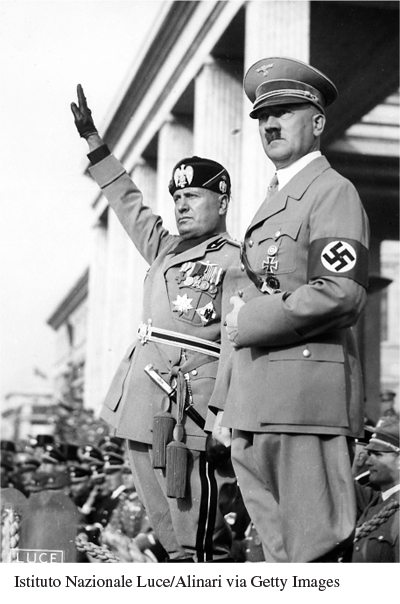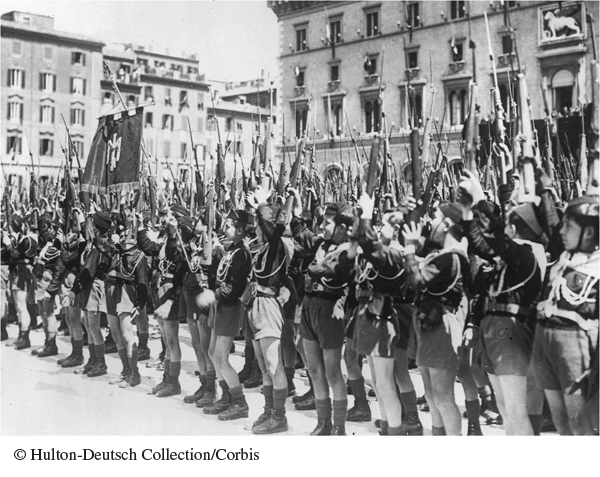A History of Western Society: Printed Page 915
A History of Western Society, Value Edition: Printed Page 876
A History of Western Society, Concise Edition: Printed Page 917
The Seizure of Power

In the early twentieth century, Italy was a liberal constitutional monarchy that recognized the civil rights of Italians. On the eve of World War I, the parliament granted universal male suffrage, and Italy appeared to be moving toward democracy. But there were serious problems. Much of the Italian population was still poor, and many peasants were more attached to their villages and local interests than to the national state. Moreover, the papacy, many devout Catholics, conservatives, and landowners remained strongly opposed to liberal institutions, and relations between church and state were often tense. Class differences were also extreme, leading to the development of a powerful revolutionary socialist movement.
World War I worsened the political situation. To win support for the war effort, the Italian government had promised territorial expansion as well as social and land reform, which it could not deliver. Instead, the Versailles treaty denied Italy any territorial gains, and soaring unemployment and inflation after the war created mass hardship. In response, the Italian Socialist Party followed the Bolshevik example, and radical workers and peasants began occupying factories and seizing land in 1920. These actions mobilized the property-
Into these crosscurrents of unrest and fear stepped bullying, blustering Benito Mussolini (1883–1945). Mussolini began his political career before World War I as a Socialist Party leader and radical newspaper editor. In 1914 he had urged that Italy join the Allies, a stand for which he was expelled from the Socialist Party. Returning home after being wounded at the front in 1917, Mussolini began organizing bitter war veterans like himself into a band of Fascists — from the Italian word for “a union of forces.”

At first Mussolini’s program was a radical combination of nationalist and socialist demands. As such, it competed directly with the well-
Fascism soon became a mass movement, one which Mussolini claimed would help the little people against the established interests. In 1922, in the midst of chaos largely created by his Black Shirt militias, Mussolini stepped forward as the savior of order and property. Striking a conservative, anticommunist note in his speeches and gaining the support of army leaders, Mussolini demanded the resignation of the existing government. In October 1922 a band of armed Fascists marched on Rome to threaten the king and force him to appoint Mussolini prime minister of Italy. The threat worked. Victor Emmanuel III (r. 1900–1946) — who himself had no love for the liberal regime — asked Mussolini to take over the government and form a new cabinet. Thus, after widespread violence and a threat of armed uprising, Mussolini seized power using the legal framework of the Italian constitution.